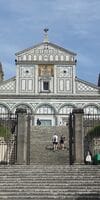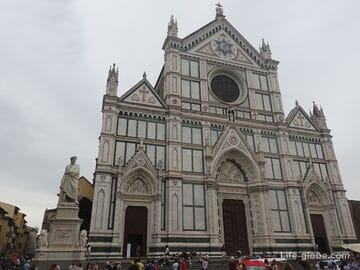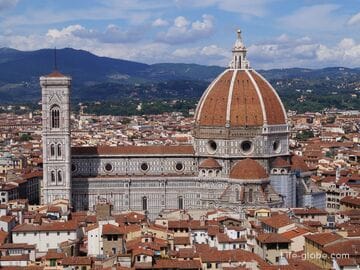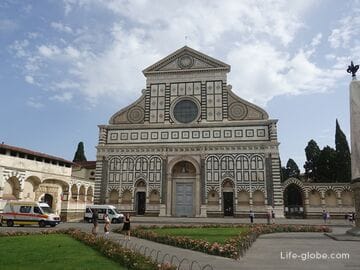San Miniato al Monte (Abbazia di San Miniato al Monte) is a basilica with a crypt, an old sundial, a monumental cemetery and a beautiful panoramic terrace, which are part of the monastery complex of the Abbey of San Miniato.
The name of the basilica translates as the Basilica of St. Mina on the mountain (Basilica di San Miniato al Monte). Also Saint Minias or Miniato.
The Church of San Miniato is one of the best examples of the Romano-Florentine style in Florence. It has the title of a minor basilica (basilica minore).
The Basilica is located on one of the highest points of Florence - on the Mountain of the Cross (Monte alle Croci, Monte alle Croci). Thanks to this, panoramic views of the city open from the terrace near the basilica.
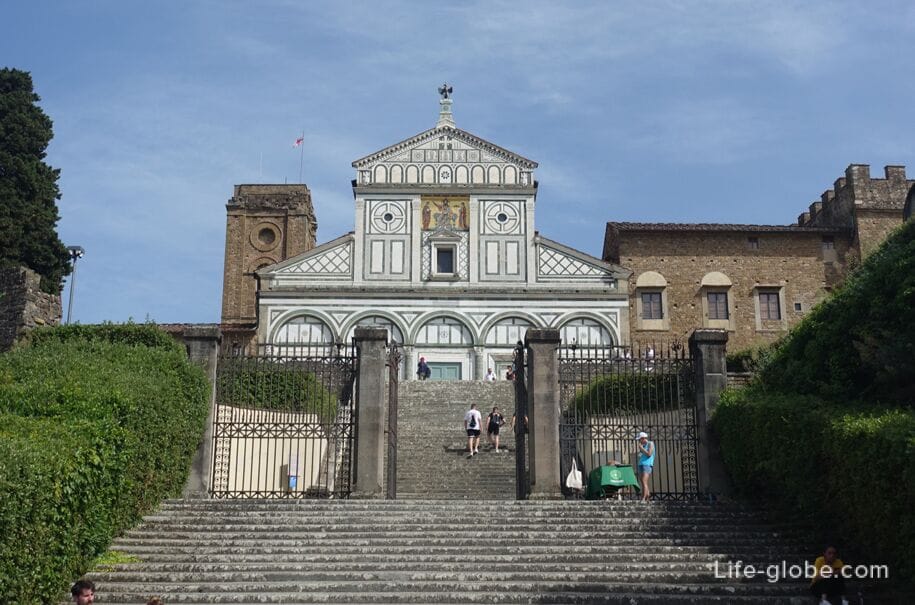
The history of the church at this place dates back to 783 as a place of worship. Subsequently, the building was severely neglected.
On April 27, 1018, the Florentine Bishop Alibrando (Hildebrande) began to restore the shrine from scratch, as a grandiose church in Romanesque form, which could adequately store the relics of San Miniato, found by the bishop himself in one of the oldest Christian cemeteries in Florence. San Miniato (Saint Minias) was the first martyr of Florence, who was probably a Greek merchant or an Armenian prince who made a pilgrimage to Rome, and arrived in Florence around 250, where he began the life of a hermit in a cave near the city and was martyred during the anti-Christian persecution of Emperor Decius. According to the hagiography, the beheaded martyr got up, raised his head and left the place of execution with his head in his hand, swam to the other side of the Arno River and went to die in his native cave to the place of his hermit. It was at this place that a chapel was erected around the 4th century, and the mountain itself, which had previously been called the Florentine (Mons Florentinus), was renamed the Mountain of the Cross.
After the construction of the basilica, it belonged to a convent of the Benedictine Order, but in 1373 the church and monastery were taken over by the Olivetanite branch of the Benedictine Order "Monte Oliveto". The monks still live in the monastery complex at the present time.
Today, this outstanding basilica is surrounded by an active monastery built from 1443 to the mid-1450s.
To the left of the basilica is a powerful bell tower of the 16th century, which looks unfinished and was damaged during the siege of Florence in 1530. Also adjacent to the basilica is the former summer residence of the bishops of Florence. There is a hospital, fortifications and a memorial cemetery on the territory.
A wide marble staircase leads to the basilica on the top of the mountain, which is called the "Dante staircase". The stairway has several flights with partially preserved old steps. According to legend, Dante Alighieri climbed this ladder to the mountain in order to "establish himself in the spirit."

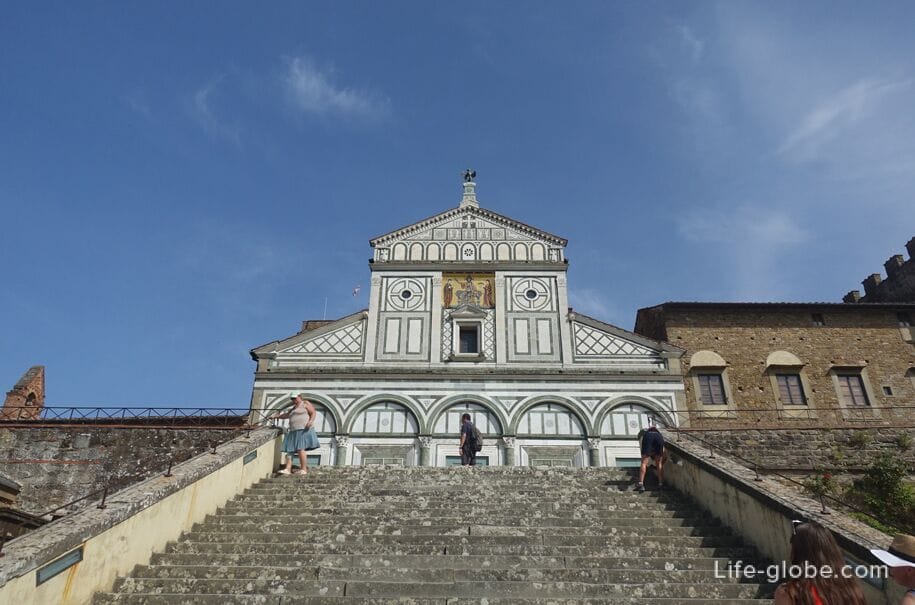
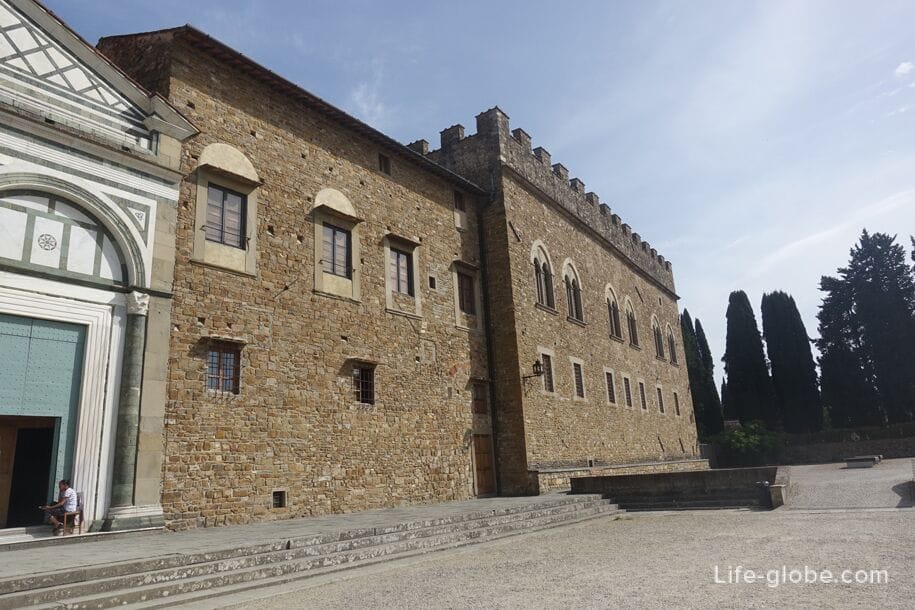
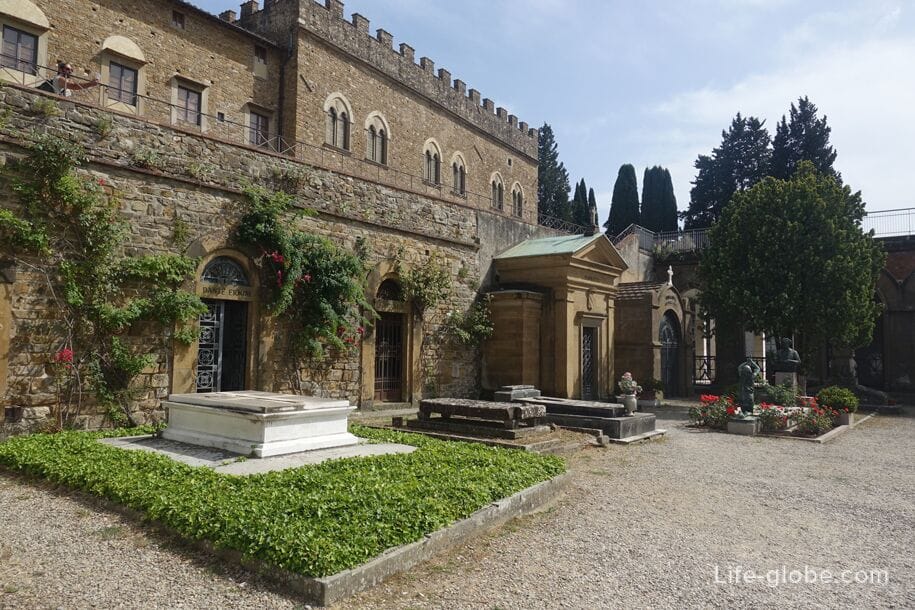
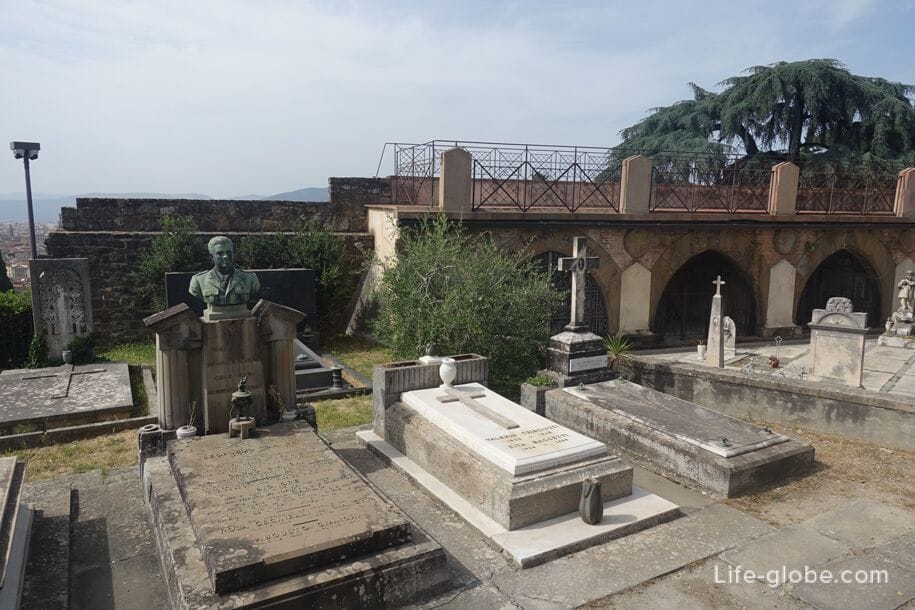
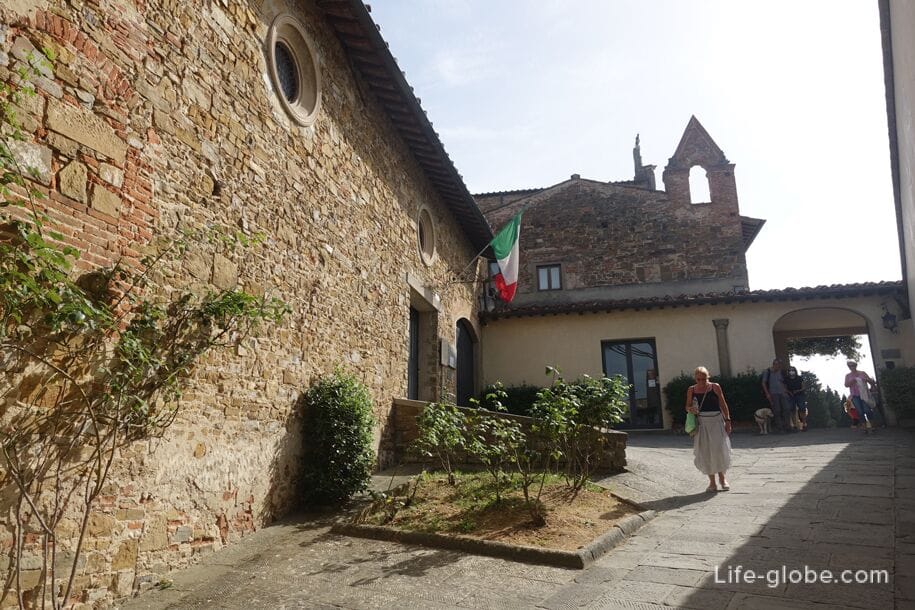
The entire complex is surrounded by defensive walls, originally built hastily by Michelangelo during the siege of 1530 and expanded into the fortress of Cosimo I de' Medici in 1553.
The walls of the former fortress now surround a large ornate monumental cemetery "Holy Gates" (Porte Sante, Porte Sante), founded in 1854. Carlo Collodi, the creator of Pinocchio; poet and writer Luigi Ugolini; sculptor Libero Andreotti; artist Maria Luisa Ugolini Bonta; soprano Marietta Piccolomini; writer Giovanni Papini; experimental physicist Bruno Benedetto Rossi and others are buried here.
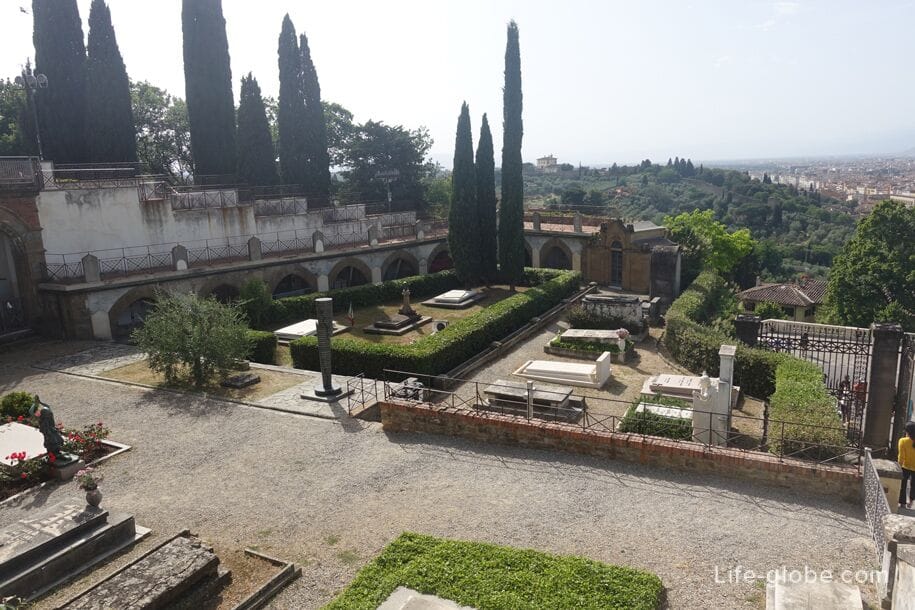
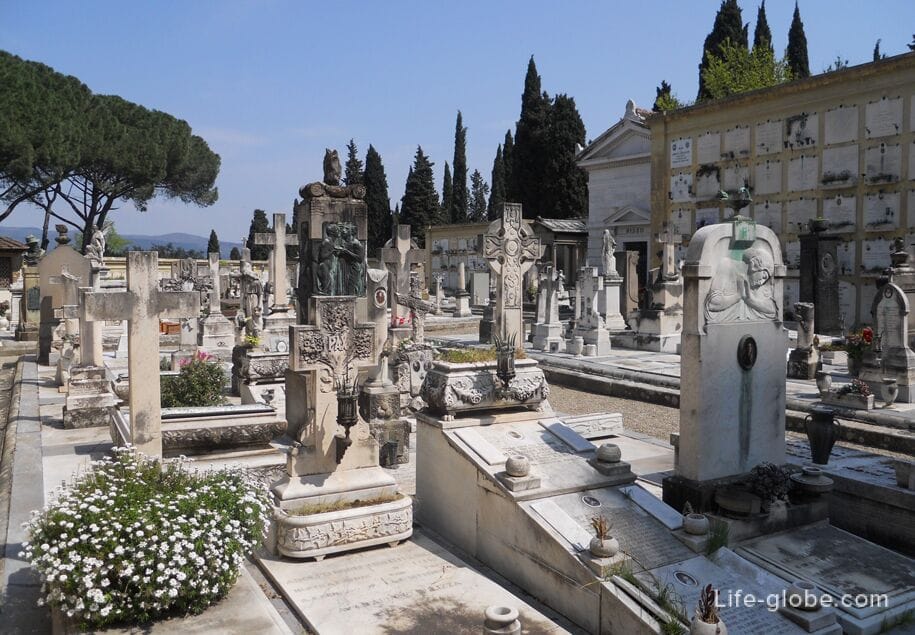
Near the entrance to the basilica there is a large platform, from the terrace of which panoramic views of the historical part of Florence open. Views also open from the stairs leading to the basilica.
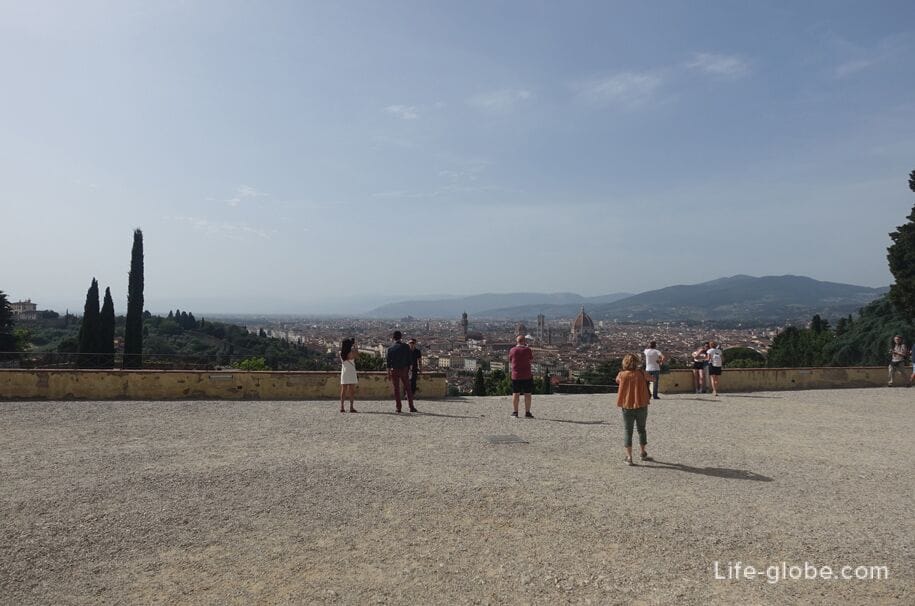

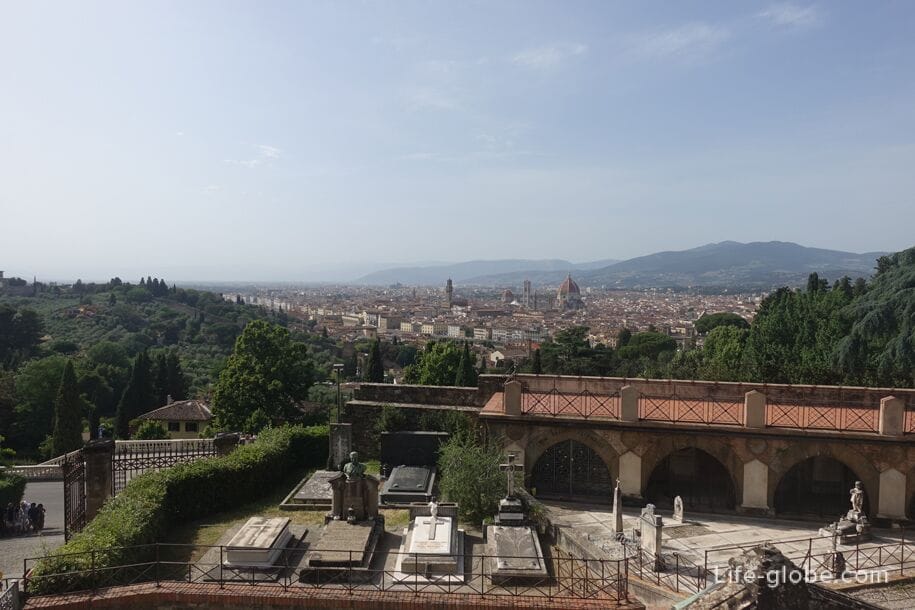
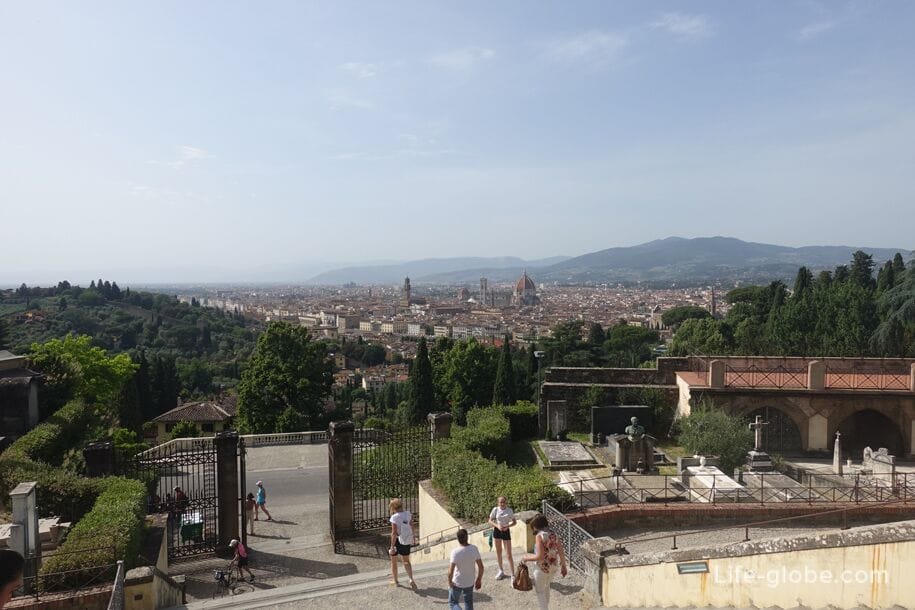
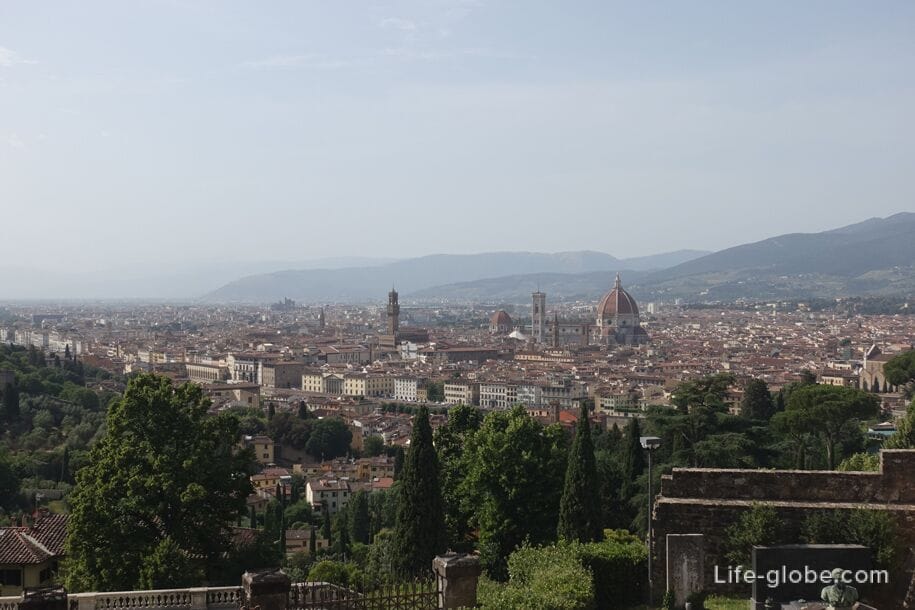
Another good observation deck-the terrace is located below the basilica, and from it you can also admire the panoramas of Florence.
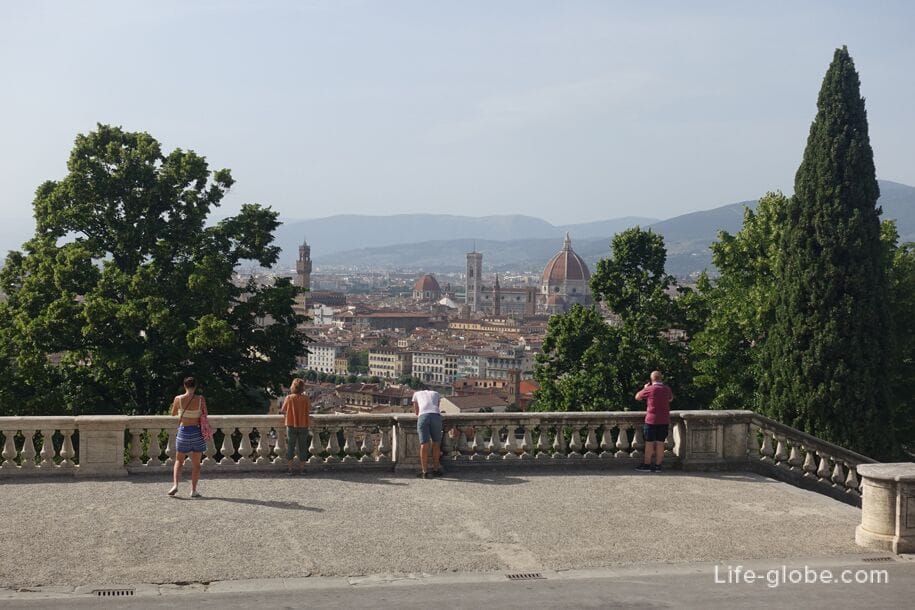
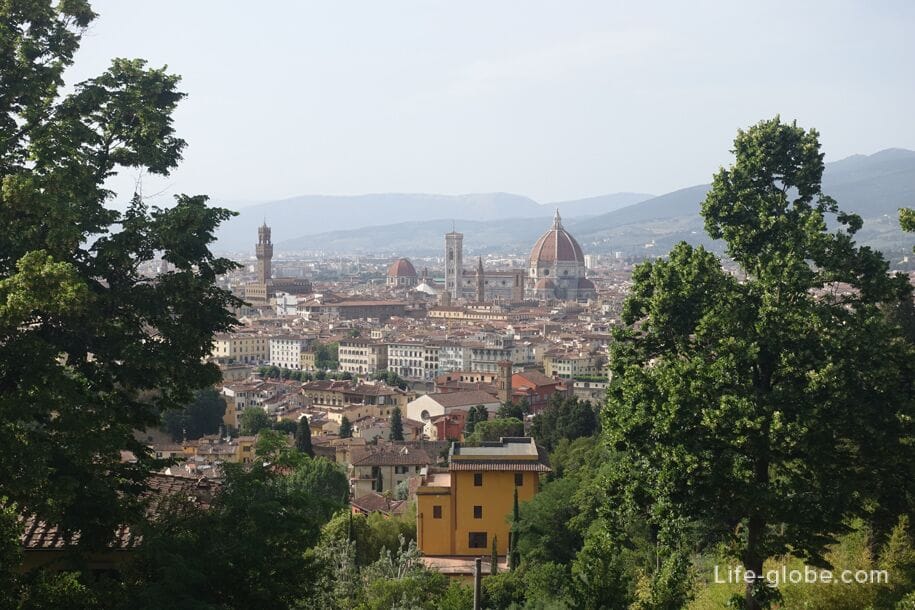
On the territory, near the basilica, there is a monastery pharmacy San Miniato a Monte, where you can buy delicacies made by hand in the monastery: tartlets with jam, chocolate and lemon cupcakes, strudel, various types of cookies, as well as artistic candles made of beeswax.
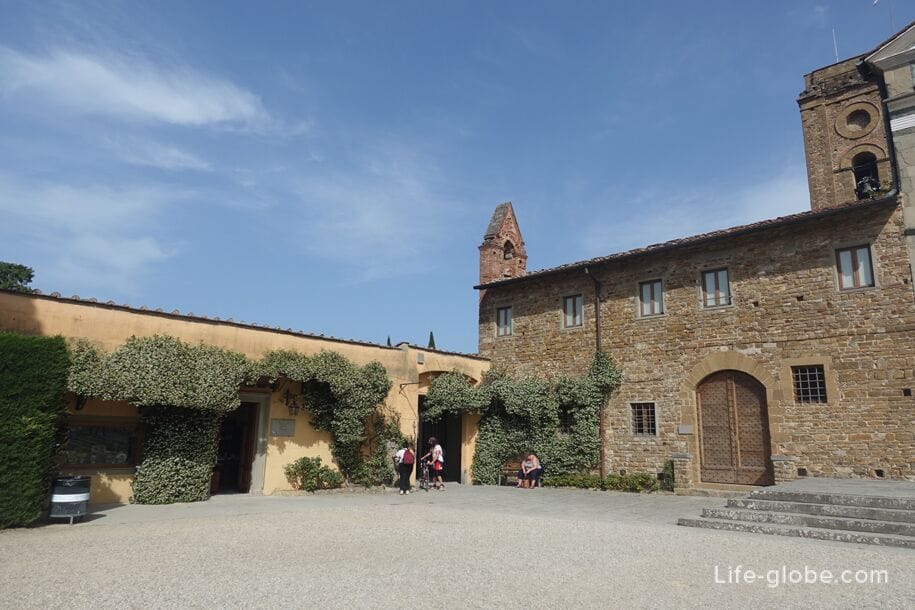
Exterior of the Basilica of St. Minias
The facade of the Basilica of St. Minias is one of the masterpieces of Florentine Romanesque architecture, inspired by solid and geometric classicism taken from the marble inlays of Roman monumental buildings.
The facade is visually divided into two main parts. The lower one is characterized by five arches supported by semi-columns of green serpentine with Corinthian bases and capitals of white marble, which is a reference to the first early Christian basilicas in five naves. The second, upper part, has two symmetrical pediments decorated with a two-tone effect of white marble and a green serpentine from Prato. The central part of the second level is characterized by a four-style loggia supported by four columns. In the center of the loggia is a window framed by two columns supported by marble lion heads, which are topped with a tympanum, in the center of which is an insert of a vase between two pigeons.
On the upper panel of the facade there is a colored mosaic of Christ between the Virgin and San Miniato, created in 1260. The top of the basilica has a pediment with a series of nine white and green arches topped with a cross and candelabra. The facade is crowned by a copper eagle, which was the symbol of the guild of wool merchants (Arte di Calimala), which previously financed and was responsible for the maintenance of the church (from about 12-13 centuries).
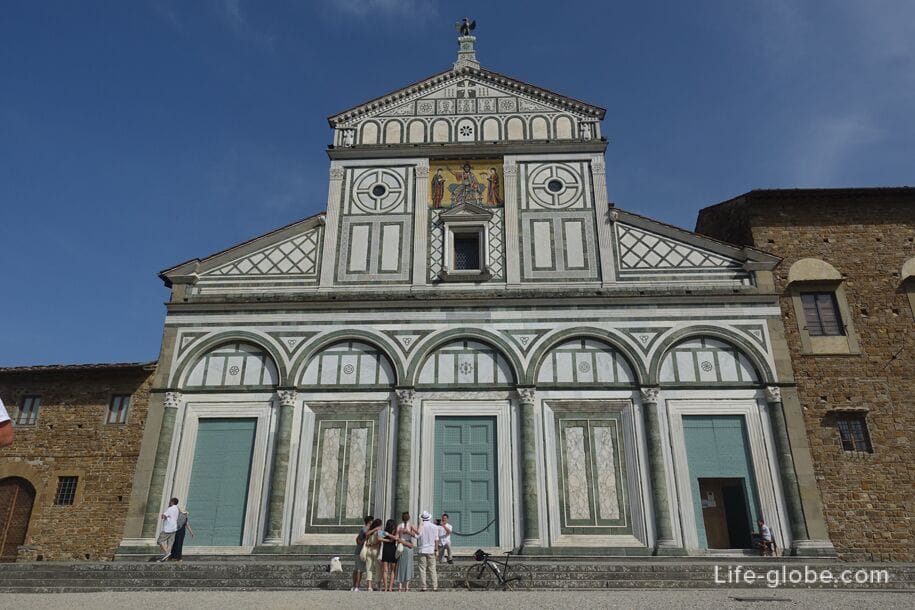
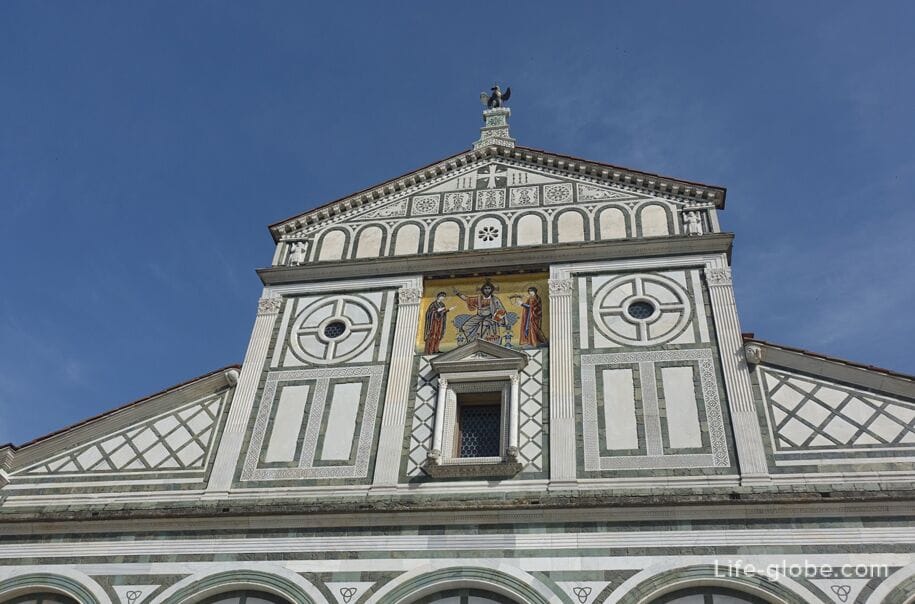
Interior and crypt of the Basilica of St. Minias
The basilica has three naves without a transept and a Romanesque interior that demonstrates an early feature of the choir rising on a platform above the crypt.
Inside the walls of the basilica, as well as outside, are lined with two-tone marble in the inlaid style.
The main nave is separated from the side by arcades on marble columns of the Corinthian order. The ceiling of the main nave, which is typical of Romanesque architecture, with open rafters, which are brightly painted in the Tuscan tradition with floral ornaments (14th century).
Fragments of frescoes from the 13th-14th centuries have been preserved on the walls of the basilica.
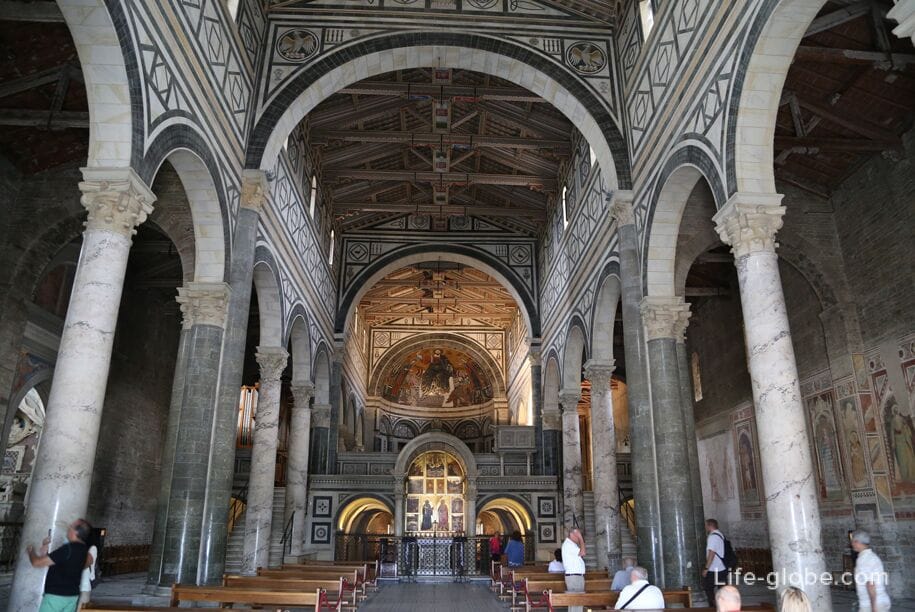

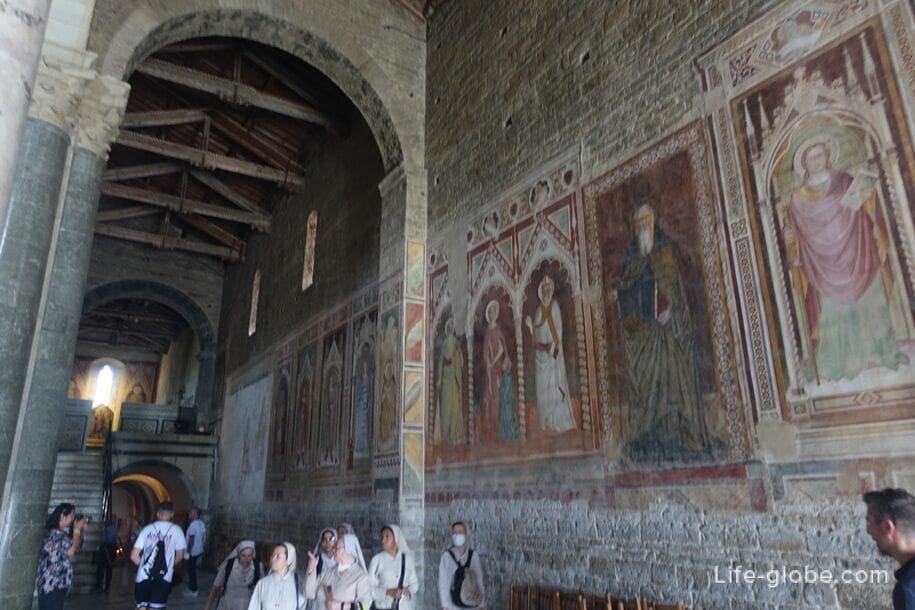

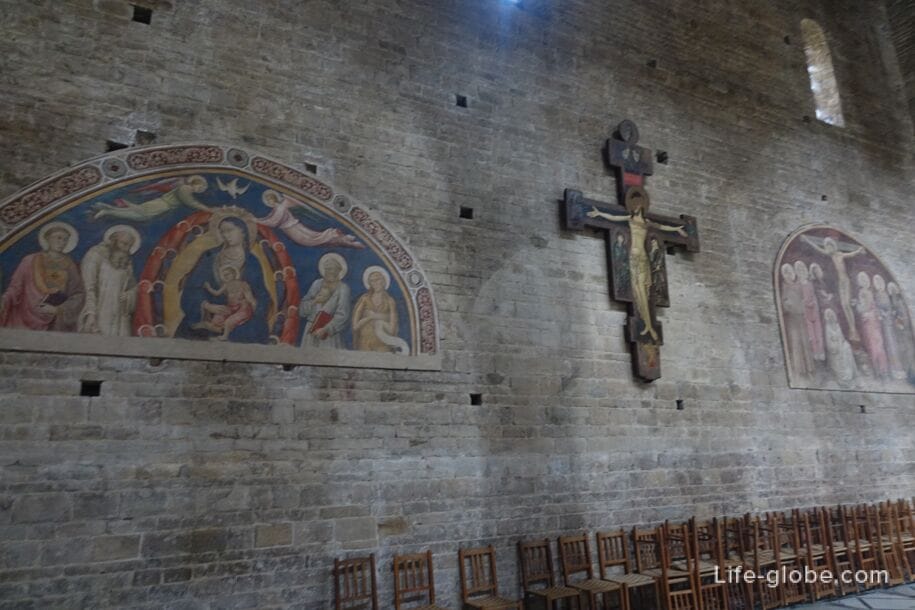
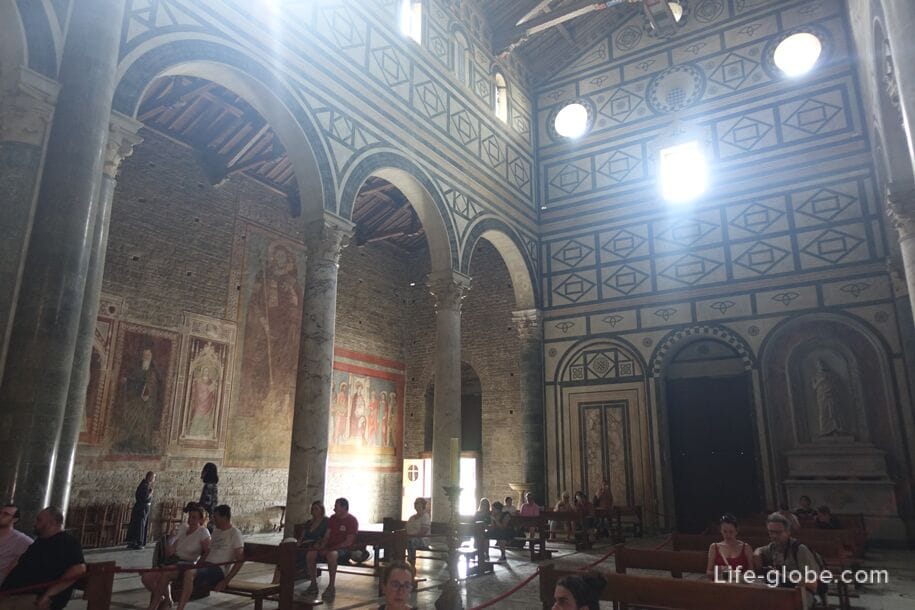

In the elevated choir and presbytery there is a magnificent Romanesque pulpit and a screen made in 1207.
The apse is dominated by a large mosaic of Christ between the Virgin and Saint Minias, dating from 1297. The crucifixion above the main altar is attributed to Luca della Robbia. The sacristy is decorated with a large cycle of frescoes on the life of St. Benedict by Spinello Aretino (1387).
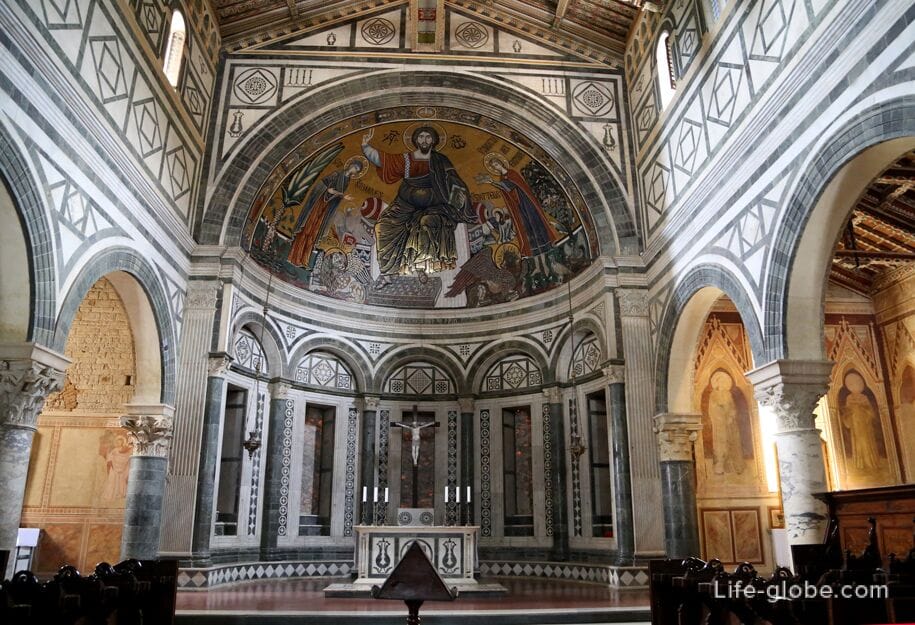
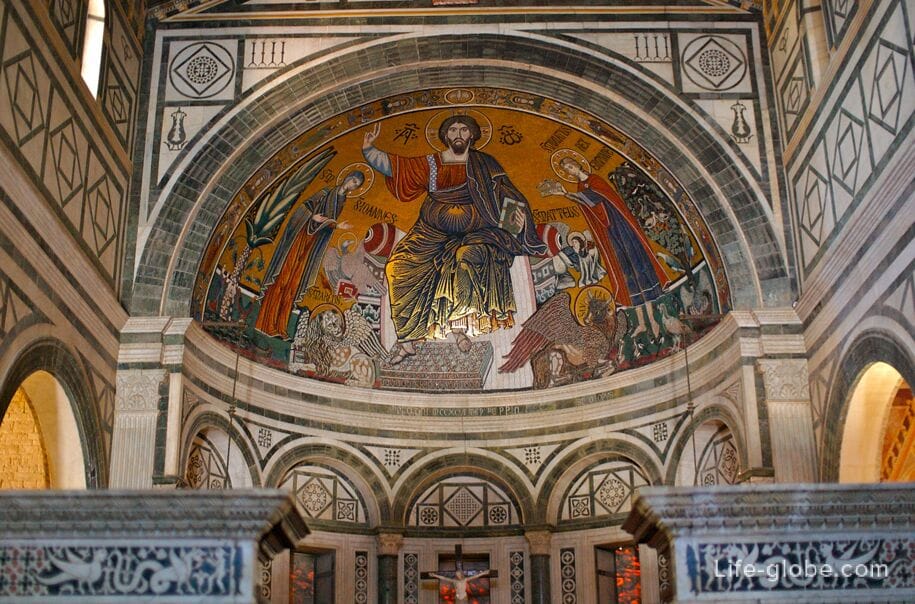
In the center of the main nave stands a beautiful detached chapel of the Crucifixion (Cappella del Crocefisso, Capella del Crocefisso), made unusually, in the form of a tabernacle with a cylindrical vault according to drawings by Michelozzo di Bartolomeo in 1448. There is an eagle at the top of the chapel. It is believed that the icons of the altar with the image of Saint Miniato were painted by Agnolo Gaddi, and the terracotta decorations were made by Luca della Robbia.

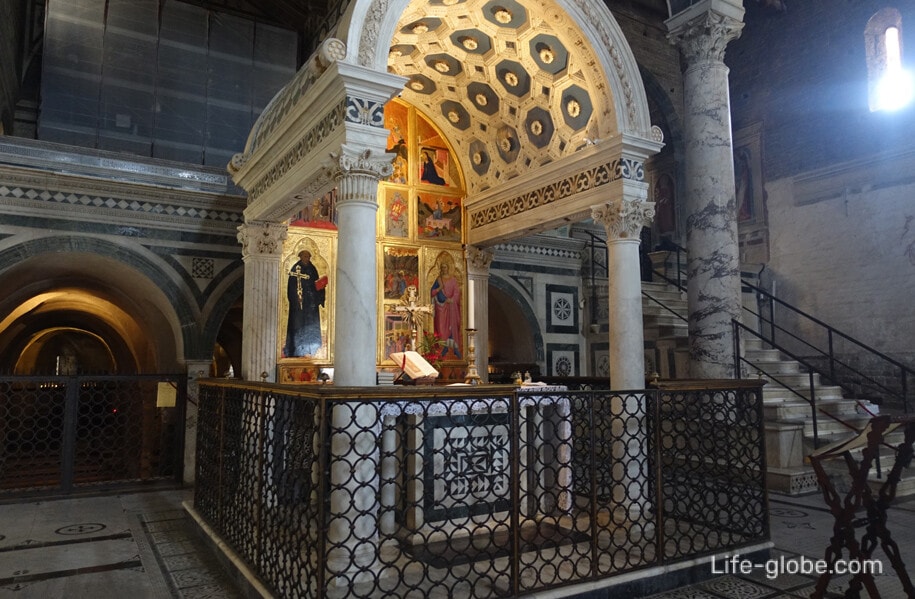
The Chapel of the Cardinal of Portugal (Cappella del Cardinale del Portogallo), located to the left of the nave, is one of the most magnificent tombstones of the Italian Renaissance. It was built in 1473 as a monument to Cardinal James of Lusitania, who died in Florence, where he was ambassador of Portugal in 1459. This is the only tomb in the church. The chapel was designed by Brunelleschi's associate, Antonio Manetti, and completed after his death by Antonio Rossellin. The tomb was made by Antonio and Bernardo Rossellino.
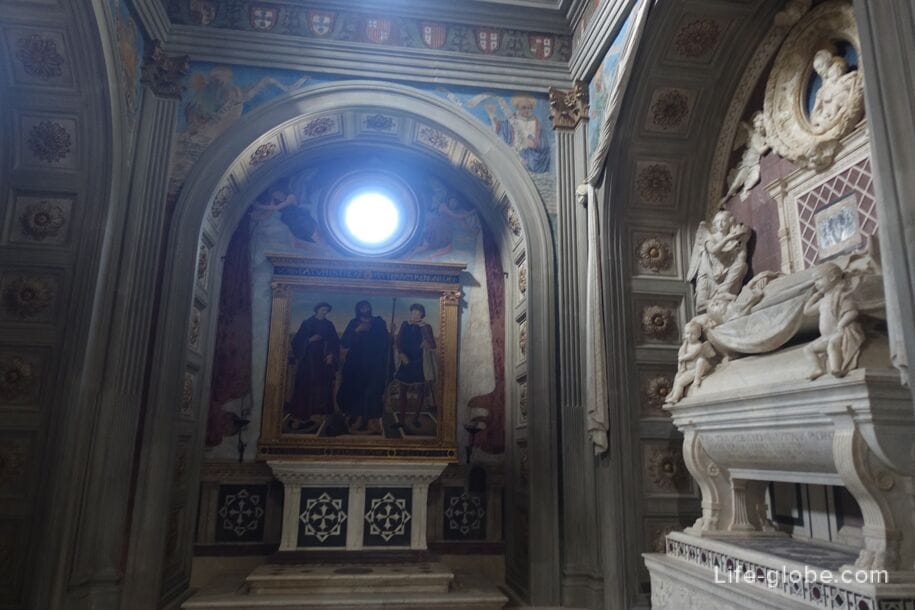
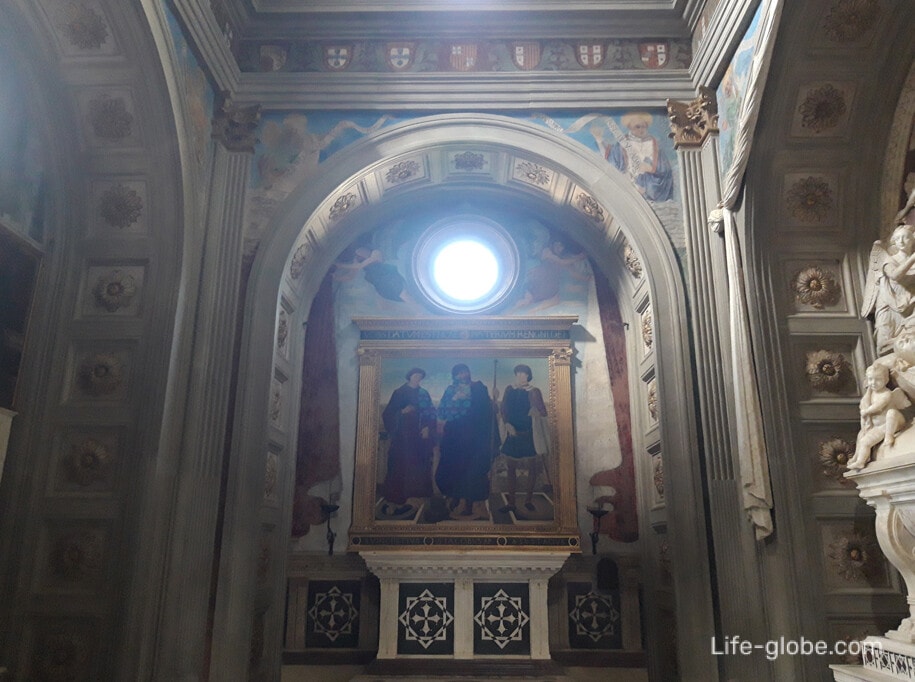

The floor of the central nave of the basilica is lined with marble mosaics.
The Basilica of San Miniato al Monte houses the Solstice sundial, which is one of the oldest still functioning in Europe. So, on the floor of the basilica there is a marble zodiac circle of 1207, on which for a few moments during the hours of the Florentine solar noon on the summer solstice, the sign of the constellation cancer depicted there is illuminated through the window of the temple by a sunbeam.

The oldest room of the basilica is the crypt (underground crypt), into which you can descend from the basilica. The crypt dates back to the 11th century.
The main altar supposedly contains the relics of Saint Minias himself. Although there is evidence that they were transported to Metz (a city in France) even before the church was built.
In the vaults of the crypt you can see the magnificent frescoes of Taddeo Gaddi, dating from 1341.
The ceiling cross vaults are supported by numerous columns, which, in turn, divide the crypt into three central and four side naves. Columns and capitals are distinguished by the quality of workmanship and materials (various marbles and terracotta). The capitals still have traces of gilding made in 1342 by Taddeo Gaddi.
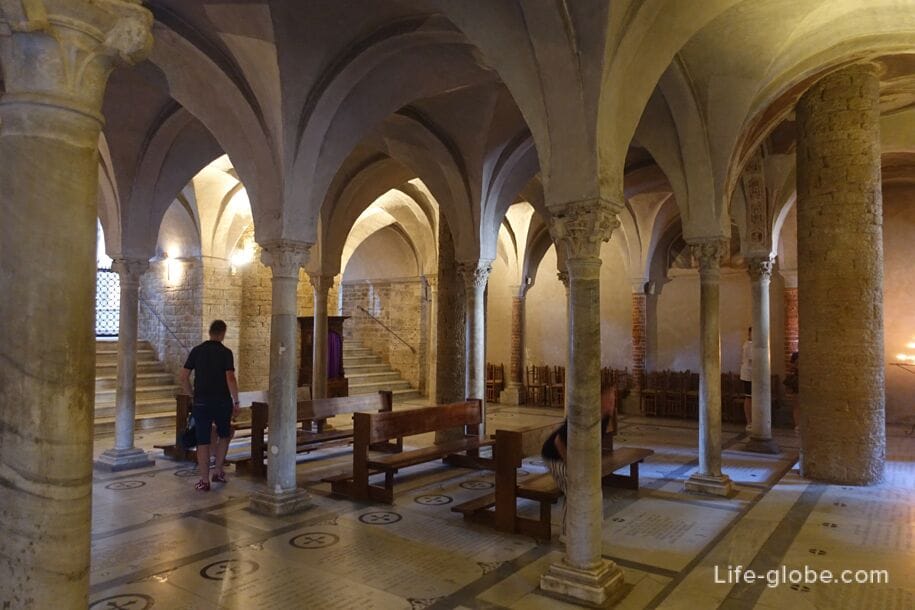
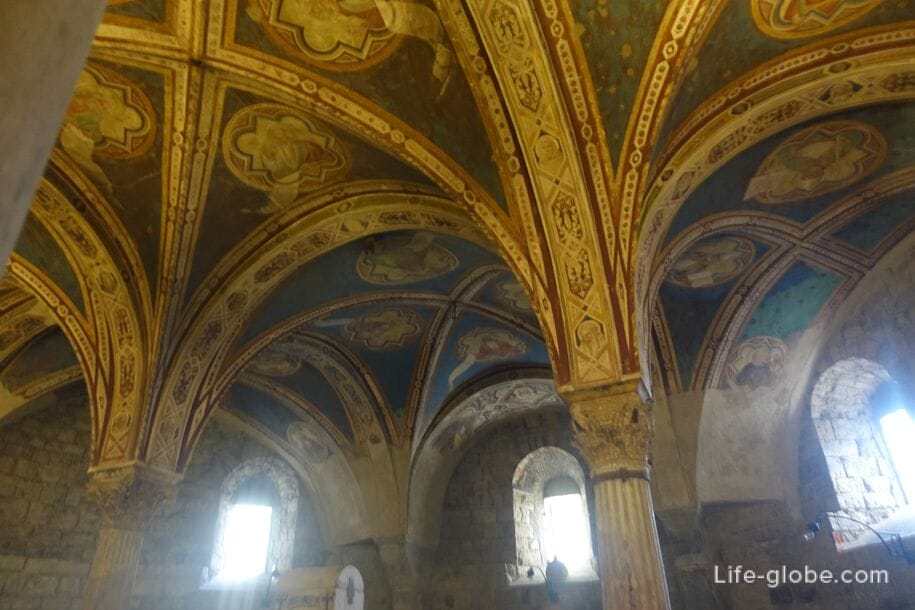
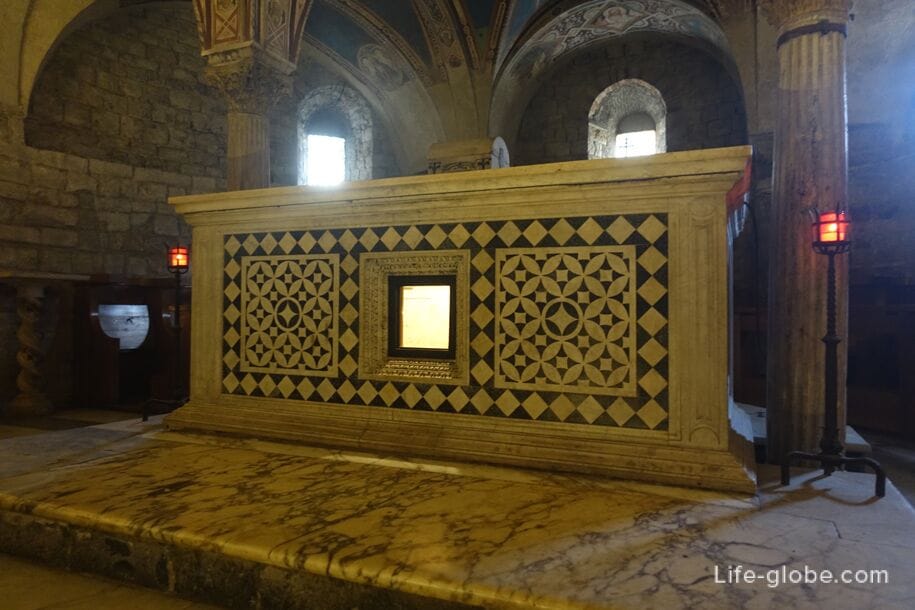

Practical information
Services are held regularly in the basilica.
Visiting the basilica and crypt is free.
We recommend checking the opening hours of the basilica, the time of services and other information on the official website of the Basilica of St. Minius: sanminiatoalmonte.it.
The Basilica of St. Minius is located on the left (south) side of the Arno River, near the famous panoramic Michelangelo Square, at address Via delle Porte Sante 34, 50125 Florence FI, Italy.
Coordinates of the Basilica of St. Minius: 43°45'34.0"N 11°15'54.0"E (43.759444, 11.265000).
All accommodation facilities in Florence (hotels, apartments, guest houses, etc.), including in the historical center of the city and more remotely from it, can be viewed and booked here




